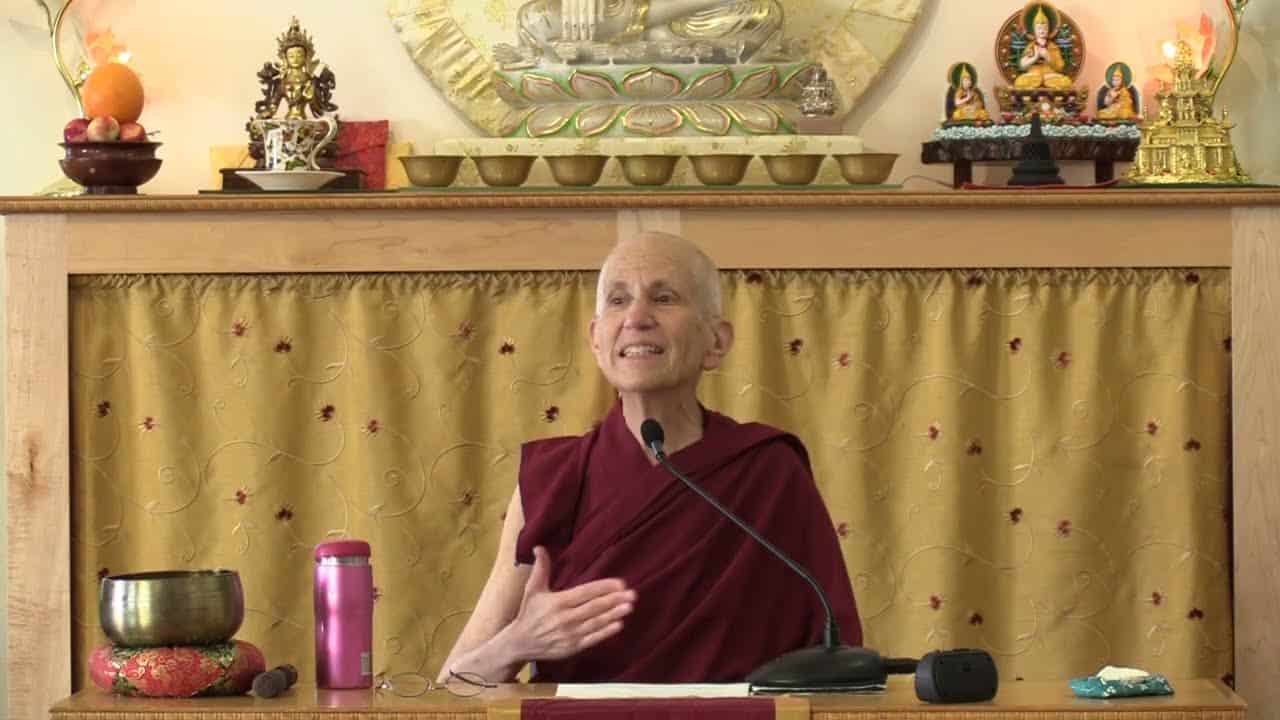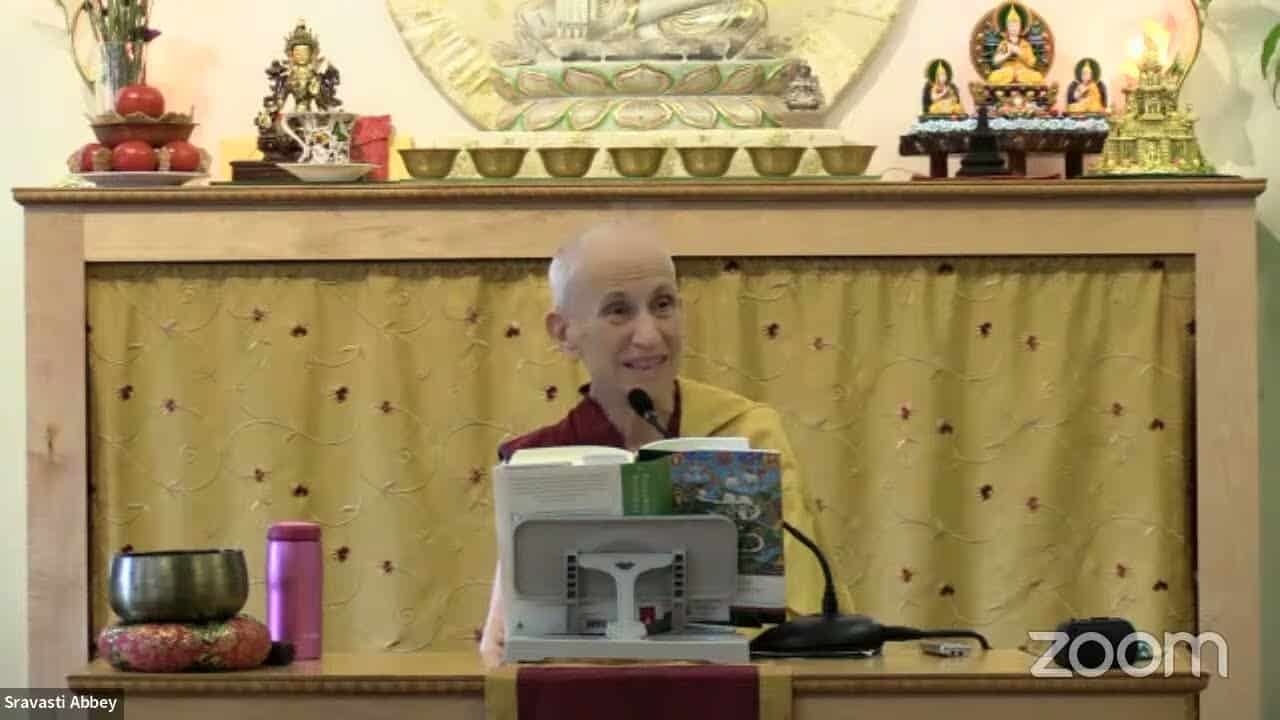Entrance to the Buddhist path
01 Following in the Buddha's Footsteps
Part of an ongoing series of teachings based on the book Following in the Buddha's Footsteps, the fourth volume in The Library of Wisdom and Compassion series by His Holiness the Dalai Lama and Venerable Thubten Chodron.
- Overview of the text and background of the series
- Three higher training
- True cessations and true paths
- Cultivating Buddhist worldview
- What it means to take refuge?
- Motivation for cultivating refuge, renunciation and bodhicitta
- Developing faith by studying and practicing the dharma
01 Entrance to the Buddhist path (download)
Contemplation Points
- Although intricacies of karma can only be known by a buddha, the general aspects can be seen and understood when we consider them (i.e. generosity brings wealth, good ethical conduct brings good rebirth, etc). Spend some time thinking about how your actions of body, speech, and mind have an ethical component. Make specific examples from your own life and world around you of keeping (or not keeping) good ethical conduct and what some results of those actions are.
- The Buddha described our unsatisfactory situation in his teaching on Four Noble Truths. In your own words, describe these four truths: true dukkha, true causes, true cessations and true paths.
- What makes our spiritual practice Buddhist? Why is it important to be clear about this?
- When we take refuge in the Three Jewels, what are we taking refuge in? What really are the Buddha, Dharma, and Sangha and what makes them reliable guides for actualizing the path ourselves?
- Why is an attitude of humility important when we take refuge and seek spiritual guidance?
- We are encouraged to have faith in the Three Jewels based on having studied and investigated the Buddha’s teachings, not simply on having admiration or amazement of the Buddha’s qualities. Why is this?
Venerable Thubten Chodron
Venerable Chodron emphasizes the practical application of Buddha’s teachings in our daily lives and is especially skilled at explaining them in ways easily understood and practiced by Westerners. She is well known for her warm, humorous, and lucid teachings. She was ordained as a Buddhist nun in 1977 by Kyabje Ling Rinpoche in Dharamsala, India, and in 1986 she received bhikshuni (full) ordination in Taiwan. Read her full bio.


